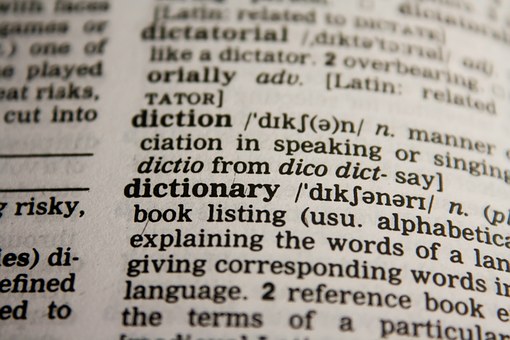DIBELS – What It May Mean For Your Child
 With winter DIBELS (Dynamic Indicators of Basic Early Literacy Skills) benchmark tests right around the corner, let’s discuss the test in detail and what it may mean for your child. We’ll also look at effective reading tutoring for children who struggle to meet reading goals.
With winter DIBELS (Dynamic Indicators of Basic Early Literacy Skills) benchmark tests right around the corner, let’s discuss the test in detail and what it may mean for your child. We’ll also look at effective reading tutoring for children who struggle to meet reading goals.
Today after school, I checked my kindergarten son’s backpack just like I always do. There was his lunchbox, complete with uneaten fruit but completely devoured cookies, homework packet, and his books from his teacher, just like normal. There was also something different, a DIBELS packet with activities to practice for the upcoming round of benchmark testing.
My phone almost immediately started buzzing with text messages and voicemails from some of my close mom friends who were wondering what this meant and what they were supposed to practice. They were also concerned about what the previous scores meant and how they could help their child improve.
DIBELS is one measure of reading ability that is standardized and used nationally in many schools kindergarten through 3rd grade (in some cases it may go further, but this is less common). The purpose of DIBELS is to measure a variety of reading skills and predict outcomes for students. When used correctly it can help teachers plan interventions and identify students who are at risk for reading difficulty.
DIBELS can also give parents some major anxiety. While it is not a perfect measure, it can be an accurate predictor of future reading outcomes, but in order to understand possible outcomes, you first must understand what is tested and what each score means.
Here are some of the areas included in the current DIBELS test. I am also including the common abbreviations you may see your child’s teacher use to refer to the individual sub-tests. Keep in mind these vary by grade level so your child may not take every test. Also, DIBELS is mostly oral, so students are tested one-on-one by a trained test proctor.
- First Sound Fluency (FSF): This assessment is given only in kindergarten and only at the first and second benchmark period. It assesses students on phonemic awareness skills which are essential early literacy skills. Students are given a word like man and they are asked to identify that the first sound is /m/. Students who perform well on this test are less likely to have serious reading difficulties than those who do poorly.
- Phoneme Segmentation Fluency (PSF): This test is given in Kindergarten and the first testing period of first grade. Like FSF this assesses early phonemic awareness skills. Students are given a word like cat and asked to separate it into its individual sounds or phonemes /k/ /a/ /t/. Students must give sounds, not letter names. Like FSF this is a key predictor of how likely a child is to develop early literacy skills and students who perform poorly are more likely to experience reading difficulties.
- Nonsense Word Fluency (NWF): Nonsense word fluency begins in kindergarten and is tested through second grade. It tests students understanding of phonics by having them read nonsense words like hig or nup. Using nonsense words ensures that decoding ability is tested as none of the words will be memorized by students (whereas real words like cat or dog could be memorized and would not indicate how well students understood letter sounds). When this test is scored, students receive a point for each individual sound as well as an extra point for reading the word without segmenting it. For example, if the word is hig, a student who read /h/ /i/ /g/ sound by sound would get 3 points. A student who did not have to sound the word out and simply read /hig/ would get 4 points. Since phonics and decoding is an essential early literacy skill, this assessment is a good indicator of early literacy development. Students who perform poorly are more likely to experience reading difficulties.
- DIBELS Oral Reading Fluency (DORF): This assessment asks students to read a grade level passage for one minute. They are scored based on how many words they read correctly in one minute. They are also then asked to retell the passage which gives an indication of their comprehension. This assessment starts in first grade and, depending on the school, may be used until students are in the 6th Fluency is a key component of the reading process and students who are not fluent readers are likely to experience significant reading difficulties.
Now that we have discussed the sub-tests within DIBELS, it is also important to understand the scoring system. Teachers will likely give you a number score. It is crucial that you ask them to also tell you where your child stands compared to the benchmark. This means you need to know if your child is Well Below Benchmark, Below Benchmark, At Benchmark, or Above Benchmark. You can ask for this information for each individual test as well as your child’s composite score.
By now, your head may be spinning, and that is ok. Let’s break down exactly what each one of these scores means for you and your child.
- Above Benchmark: If your child scores Above Benchmark it means your child is performing well above the average for their grade level. Given appropriate core classroom instruction, the chances that they will meet literacy goals is above 90%.
- At Benchmark: If your child scores At Benchmark they are performing at an average level for their grade. Without intervention and with only effective core classroom instruction, the likelihood that they will reach early literacy goals is 70% to 85%. Students who score at the lower level of At Benchmark are likely to need some strategic intervention to reach reading goals.
- Below Benchmark: If your child scores Below Benchmark, it is very likely that classroom support will not be enough for them to reach subsequent reading goals. In fact, with only core classroom instruction, the likelihood that students who score Below Benchmark will achieve reading goals is only about 40% to 60%. If your child scores in this area, it may be time to think about an effective reading program for them.
- Well Below Benchmark: If your child scores Well Below Benchmark goals, it means they are significantly behind grade level norms. Without appropriate intervention, the likelihood that they will make reading progress is only about 10% to 20%. These students need intensive reading intervention.
 Now that you have an idea of what each test is and what each score means, you have the ability to help your child. Children who are below benchmark are not likely to reach subsequent reading goals with only classroom instruction. They need reading remediation.
Now that you have an idea of what each test is and what each score means, you have the ability to help your child. Children who are below benchmark are not likely to reach subsequent reading goals with only classroom instruction. They need reading remediation.
However, not all reading programs are created equal. If your child needs intensive reading intervention, it is imperative that you find a high-quality program. A Structured Literacy program with a qualified reading clinician who can monitor progress and adjust instruction to meet your child’s needs will provide the best chance at success.
By helping your child get the reading tutoring they need, you can help increase their odds that they will be successful in reading. Don’t let your child struggle and have a 10% chance of meeting grade-level reading goals. Reading intervention will give them the best chance of success.
If you don’t live near a qualified, certified clinician or you have a tight schedule or budget, online tutoring can be a good option. RW&C offers individualized support with a Structured Literacy model. We incorporate all elements of effective reading instruction and have trained clinicians who can assess, monitor, and adjust instruction to fit your child’s needs.
Contact us today for more information or to get started with our online tutoring program.
If you want to know more about DIBELS scores, or want information specific to your child’s grade level, check out this scoring guide from the University of Oregon. All information regarding benchmarks scores was adapted from this source.
Becky Welsch
RW&C, LLC
www.rwc4reading.com
Becky Welsch has a Master’s degree in K-8 Education. She is certified to teach in the state of Arizona and has special endorsements in the areas of English Language Learners and Reading. Becky has worked with struggling readers in the primary as well as secondary grades. Her experience also includes intensive reading intervention both in person as well as with online teletherapy. Becky has experience with early literacy skills like phonics and phonemic awareness development. She has used several structured literacy programs including Language! and Spalding phonics. She is also trained to administer DIBELS tests and has worked with the DIBELS Next reading remediation program.


 After my four years in the primary classroom, I moved up to 5th grade and then eventually to 7th and 8th grade reading. As I moved out of the primary classroom, I noticed a distinctive shift, reading became a silent, internal process. Students were very rarely asked to read out loud, and as a result, identifying
After my four years in the primary classroom, I moved up to 5th grade and then eventually to 7th and 8th grade reading. As I moved out of the primary classroom, I noticed a distinctive shift, reading became a silent, internal process. Students were very rarely asked to read out loud, and as a result, identifying  In order to serve the student and increase their reading skills, the correct diagnosis of the issue is essential. This is why the reading clinicians at RW&C give each student a variety of
In order to serve the student and increase their reading skills, the correct diagnosis of the issue is essential. This is why the reading clinicians at RW&C give each student a variety of  Coming from a classroom background, I know that often upper-grade teachers are not trained in early literacy and often do not have the resources that students need to master early reading skills. If your older child struggles with reading, they may not get the help they need in school.
Coming from a classroom background, I know that often upper-grade teachers are not trained in early literacy and often do not have the resources that students need to master early reading skills. If your older child struggles with reading, they may not get the help they need in school. In previous blogs, we’ve discussed the importance of
In previous blogs, we’ve discussed the importance of  As your child gets older and moves into upper elementary and middle school, you can encourage them to use post it notes as they read to ask questions, record unknown vocabulary words, and note any surprising information. This can be a great way for them to interact with the text and for you to monitor their understanding. Plus almost all kids love getting to use post it notes so it may even motivate them to read more.
As your child gets older and moves into upper elementary and middle school, you can encourage them to use post it notes as they read to ask questions, record unknown vocabulary words, and note any surprising information. This can be a great way for them to interact with the text and for you to monitor their understanding. Plus almost all kids love getting to use post it notes so it may even motivate them to read more. Our online tutoring program at RW&C incorporates
Our online tutoring program at RW&C incorporates  Learning to read is a complex process that requires children to perform multiple mental tasks simultaneously. One critical component of the reading process is morphological awareness. A morpheme is the smallest meaningful unit of language. For example, <-ing> is a morpheme and the word <jumping> has two morphemes, <jump> and <-ing>.
Learning to read is a complex process that requires children to perform multiple mental tasks simultaneously. One critical component of the reading process is morphological awareness. A morpheme is the smallest meaningful unit of language. For example, <-ing> is a morpheme and the word <jumping> has two morphemes, <jump> and <-ing>. If your child struggles with new vocabulary words and morphological skills, it is not something they will learn on their own. They need direct, explicit reading tutoring from a trained professional. Here at RW&C, our clinicians are up to date on the latest reading research, and they apply these best practices in every one of their lessons. Our program has a strong morphological component, introduced in the first lesson, and our clinicians are trained in the best methods to explicitly teach this skill to students.
If your child struggles with new vocabulary words and morphological skills, it is not something they will learn on their own. They need direct, explicit reading tutoring from a trained professional. Here at RW&C, our clinicians are up to date on the latest reading research, and they apply these best practices in every one of their lessons. Our program has a strong morphological component, introduced in the first lesson, and our clinicians are trained in the best methods to explicitly teach this skill to students. Timmie Murphy
Timmie Murphy